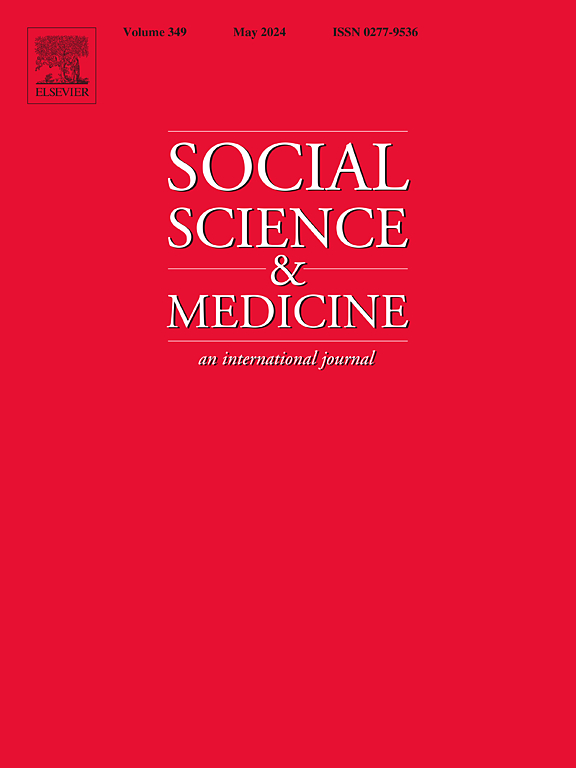复杂创伤后应激障碍 (CPTSD) 与遭受童年虐待的成年人中创伤后应激障碍 (PTSD) 之外的自杀行为有着独特的联系:一项跨越四个国家的跨国研究
IF 4.9
2区 医学
Q1 PUBLIC, ENVIRONMENTAL & OCCUPATIONAL HEALTH
引用次数: 0
摘要
背景自杀是世界范围内导致死亡的主要原因之一,而童年时期的虐待被认为是成年后自杀行为的一个重要风险因素。童年虐待与自杀之间的联系已得到充分证实;然而,与创伤后应激障碍(PTSD)相比,复杂性创伤后应激障碍(CPTSD)还包括自我组织障碍(DSO)这一额外的症状群,而复杂性创伤后应激障碍的作用仍未得到充分探讨。本研究旨在调查在不同文化背景的样本中,符合 ICD-11 PTSD 或 CPTSD 标准与有童年虐待史的成年人自杀倾向之间的关联。童年创伤问卷 (CTQ)、自杀行为问卷-修订版 (SBQ-R) 和国际创伤问卷 (ITQ) 分别用于评估童年虐待、自杀、创伤后应激障碍或 CPTSD。在控制人口统计学变量(年龄、性别、种族、教育水平和主观社会经济地位)和虐待严重程度(CTQ 总分)的情况下,进行线性回归以检验相关性。结果在1324名经历过童年虐待的参与者中,与既不符合创伤后应激障碍标准也不符合创伤后应激障碍标准(B(SE) = 1.68 (0.30),p < .001)或只符合创伤后应激障碍标准(B(SE) = 1.38 (0.43),p < .001)的人相比,符合创伤后应激障碍标准的人自杀率更高。相比之下,仅符合创伤后应激障碍标准与自杀并无明显关联(B(SE) = 0.35 (0.46),p = .45)。结论研究结果凸显了 CPTSD 与有童年虐待史的成年人自杀倾向之间的独特联系,表明 CPTSD 的 DSO 症状群在这一人群的自杀倾向发展过程中扮演了关键角色,这也是 CPTSD 与创伤后应激障碍的区别所在。针对这些症状采取有效的干预策略可能至关重要。对有自杀风险的人群进行儿童虐待和 CPTSD 筛查对于指导治疗计划至关重要。本文章由计算机程序翻译,如有差异,请以英文原文为准。
Complex Posttraumatic Stress Disorder (CPTSD) is Uniquely Linked to Suicidality Beyond Posttraumatic Stress Disorder (PTSD) in Adults with Childhood Maltreatment: A Multinational Study Across Four Countries
Background
Suicide is a leading cause of death worldwide, with childhood maltreatment identified as a significant risk factor for suicidal behavior in adulthood. The link between childhood maltreatment and suicidality is well-documented; however, the role of complex posttraumatic stress disorder (CPTSD), which includes an additional symptom cluster of disturbances in self-organization (DSO) compared to posttraumatic stress disorder (PTSD), remains underexplored. This study aimed to investigate the association between meeting the criteria for ICD-11 PTSD or CPTSD and suicidality in adults with a history of childhood maltreatment across culturally diverse samples.
Methods
Data were collected across four sites: the United States, the United Kingdom, China, and Malaysia. The Childhood Trauma Questionnaire (CTQ), Suicidal Behaviors Questionnaire-Revised (SBQ-R), and International Trauma Questionnaire (ITQ) were used to assess childhood maltreatment, suicidality, and PTSD or CPTSD, respectively. Linear regressions were conducted to examine the associations, controlling for demographic variables (age, sex, ethnicity, educational level, and subjective socioeconomic status) as well as the severity of maltreatment (CTQ total scores).
Results
Among the 1,324 participants who experienced childhood maltreatment, meeting the criteria for CPTSD was significantly associated with higher suicidality compared to not meeting the criteria for either PTSD or CPTSD (B(SE) = 1.68 (0.30), p < .001), or only meeting the criteria for PTSD (B(SE) = 1.38 (0.43), p < .001). In contrast, meeting the criteria for PTSD alone was not significantly associated with suicidality (B(SE) = 0.35 (0.46), p = .45). These associations remained consistent across different cultural settings.
Conclusion
The study findings highlight the unique association of CPTSD with suicidality in adults with a history of childhood maltreatment, suggesting that the DSO symptom cluster of CPTSD, which distinguish it from PTSD, play a critical role in the development of suicidality in this population. Targeting these symptoms may be essential for effective intervention strategies. Screening for childhood maltreatment and CPTSD in individuals at risk of suicide is crucial for guiding treatment planning.
求助全文
通过发布文献求助,成功后即可免费获取论文全文。
去求助
来源期刊

Social Science & Medicine
PUBLIC, ENVIRONMENTAL & OCCUPATIONAL HEALTH-
CiteScore
9.10
自引率
5.60%
发文量
762
审稿时长
38 days
期刊介绍:
Social Science & Medicine provides an international and interdisciplinary forum for the dissemination of social science research on health. We publish original research articles (both empirical and theoretical), reviews, position papers and commentaries on health issues, to inform current research, policy and practice in all areas of common interest to social scientists, health practitioners, and policy makers. The journal publishes material relevant to any aspect of health from a wide range of social science disciplines (anthropology, economics, epidemiology, geography, policy, psychology, and sociology), and material relevant to the social sciences from any of the professions concerned with physical and mental health, health care, clinical practice, and health policy and organization. We encourage material which is of general interest to an international readership.
 求助内容:
求助内容: 应助结果提醒方式:
应助结果提醒方式:


